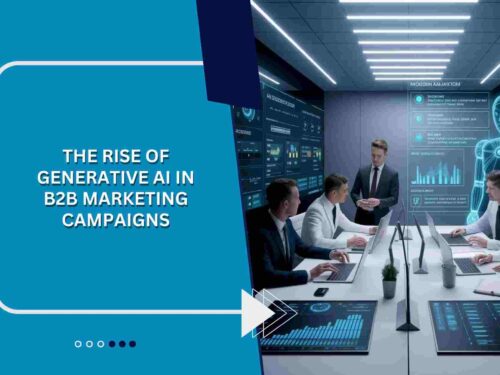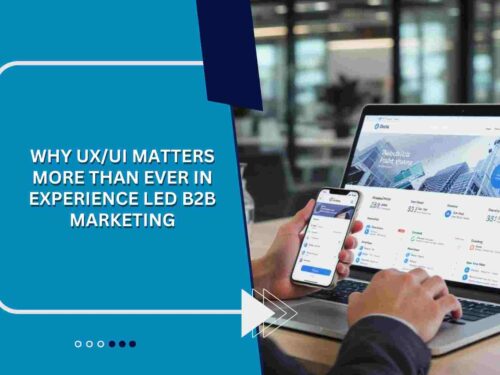B2B marketing has entered a new era one defined by speed, precision, and data-driven execution. In this landscape, programmatic advertising is no longer just an option; it’s becoming the backbone of how B2B marketers target audiences, deliver content, and generate measurable results. While consumer brands have been using this technology for years, B2B marketers are now harnessing its potential to drive awareness, engagement, and conversions among high-value business decision-makers.
Programmatic advertising refers to the automated buying and selling of digital advertising space using real-time bidding, audience data, and AI-powered algorithms. It replaces manual ad placements with technology that ensures the right message reaches the right person at the right time. This transformation is unlocking efficiency, scalability, and personalization like never before in B2B marketing.
This blog dives into how programmatic advertising works, why it’s revolutionizing B2B marketing, and how forward-thinking organizations can leverage it to build smarter, more effective campaigns.
What is Programmatic Advertising in B2B?
Programmatic advertising in the B2B context is the use of automation to purchase digital ad space targeted specifically at professionals, companies, or decision-makers. These campaigns use detailed data to reach niche audiences based on job roles, industry, company size, browsing behavior, and intent signals.
Rather than manually negotiating placements on specific websites, B2B marketers use demand-side platforms (DSPs) that automate the ad buying process across a network of websites, mobile apps, and streaming platforms. With access to high-quality data, businesses can serve ads dynamically across multiple digital channels like display, native, video, and connected TV.
In B2B, where the sales cycle is long and the buyer journey complex, programmatic advertising plays a crucial role in keeping your brand visible, nurturing leads, and influencing decision-makers at every stage.
Why Programmatic Advertising is Critical for B2B Marketers
Unlike traditional advertising that often results in broad, non-targeted impressions, programmatic advertising delivers precision targeting. It enables B2B marketers to focus on reaching senior professionals, specific accounts, or industry verticals with tailored messaging. Here’s why it’s essential for today’s B2B landscape:
1. Enhanced Audience Targeting
With advanced data integrations, you can create hyper-segmented campaigns based on company firmographics, technographics, intent data, and even account-based marketing (ABM) lists. This ensures you’re spending ad dollars only on audiences with high conversion potential.
2. Real-Time Bidding Efficiency
Programmatic advertising uses real-time bidding (RTB) to automatically buy ad impressions as users visit websites. The bidding process takes milliseconds and ensures your ad appears to the most relevant audience at the best price.
3. Full-Funnel Visibility
Whether you’re targeting top-of-funnel awareness or bottom-of-funnel conversions, programmatic platforms offer metrics across the entire buyer journey. This gives marketers full visibility into performance, ROI, and opportunities for optimization.
4. Dynamic Ad Creatives
Programmatic platforms can automatically personalize ads based on user behavior or demographics. From customized messaging to location-based visuals, this technology improves relevance and engagement without manual input.
5. Scalable and Cost-Effective
By automating media buying and reducing wasteful ad spending, programmatic advertising offers cost-effective scalability. You can reach thousands of business professionals across devices without ballooning your budget.
Key Components of a B2B Programmatic Advertising Strategy
To succeed with programmatic advertising, B2B marketers must understand its key components and how they interact in the digital ecosystem:
1. Demand-Side Platform (DSP)
A DSP is the software advertisers use to purchase ad space. It allows you to manage multiple campaigns, target audiences, and access inventory across different ad exchanges and publishers.
2. Data Management Platform (DMP)
DMPs collect and analyze audience data, helping marketers create more effective segments. Integrating first-party (CRM), second-party (partner), and third-party (external) data improves campaign accuracy.
3. Supply-Side Platform (SSP)
SSPs are used by publishers to make their inventory available for programmatic buying. These platforms work with DSPs in real time to complete transactions and deliver ads.
4. Ad Exchanges
These are the marketplaces where advertisers (via DSPs) and publishers (via SSPs) connect. Ad impressions are auctioned in real-time to the highest bidder, ensuring efficient and dynamic media buying.
5. Creative Management Platform (CMP)
CMPs help design and deliver personalized ad creatives at scale. These tools support dynamic content variations, allowing for A/B testing and adaptive messaging.
How Programmatic Advertising Powers Account-Based Marketing (ABM)
Account-based marketing is a core strategy for many B2B organizations. Programmatic advertising supercharges ABM by enabling precise delivery of ads to specific companies, departments, or even individuals.
With programmatic ABM campaigns, marketers can:
- Serve personalized ads to high-priority target accounts
- Align ad creative with buying stage and pain points
- Use retargeting to nurture engagement across devices
- Track engagement by company name or industry
This level of granularity allows for high-impact engagement with fewer wasted impressions and a more strategic spend on the audiences that matter most.
Programmatic Ad Formats Ideal for B2B
B2B marketers have access to a variety of programmatic advertising formats to suit different goals and buyer stages:
- Display Ads – Banner and sidebar ads on relevant websites for broad visibility
- Native Ads – Sponsored content that blends into the user’s reading experience
- Video Ads – Ideal for storytelling and product demos on platforms like YouTube or CTV
- Retargeting Ads – Bring back website visitors with customized messaging
- Social Ads – Programmatic buying on LinkedIn, Facebook, and X for targeted campaigns
Combining these formats in a coordinated strategy improves brand recall and drives consistent engagement.
How AI and Machine Learning Drive Better Results
Artificial intelligence and machine learning are core to programmatic advertising. These technologies analyze vast amounts of data to predict user behavior, optimize bidding, and improve creative performance.
AI can:
- Identify the best time of day or week to serve ads
- Optimize budget allocation across channels in real time
- Customize creatives based on user engagement history
- Automatically exclude underperforming placements
This level of automation and intelligence dramatically improves efficiency, allowing marketers to focus on strategy instead of manual tasks.
Metrics That Matter in Programmatic Advertising
Measuring success in programmatic advertising requires a blend of traditional and advanced metrics. Here are key indicators B2B marketers should track:
- Cost Per Thousand (CPM) – The cost of 1,000 impressions
- Click-Through Rate (CTR) – The percentage of viewers who click on your ad
- Cost Per Lead (CPL) – How much you’re spending to acquire a qualified lead
- Viewability Rate – The percentage of ads actually seen by users
- Conversion Rate – The percentage of clicks that turn into leads or sales
- Engagement by Account – Key ABM performance indicator
These insights help refine targeting, messaging, and budget allocation for future campaigns.
Challenges and Solutions in B2B Programmatic Advertising
While the benefits are clear, programmatic advertising isn’t without challenges:
1. Ad Fraud
Bots can create fake impressions or clicks, wasting budget. The solution? Work with reputable DSPs and use fraud detection tools to maintain traffic quality.
2. Brand Safety
Ads may appear next to inappropriate content. Use brand safety filters, whitelists, and contextual targeting to ensure suitable placements.
3. Data Privacy
As regulations like GDPR and CCPA evolve, respecting user consent and data privacy is essential. Partner with platforms that prioritize compliant data usage.
4. Complexity of Platforms
With so many moving parts, programmatic advertising can feel overwhelming. The key is to start small, partner with experienced vendors, and scale as you learn.
Ready to elevate your B2B marketing with intelligent programmatic campaigns? Connect with Acceligize.




